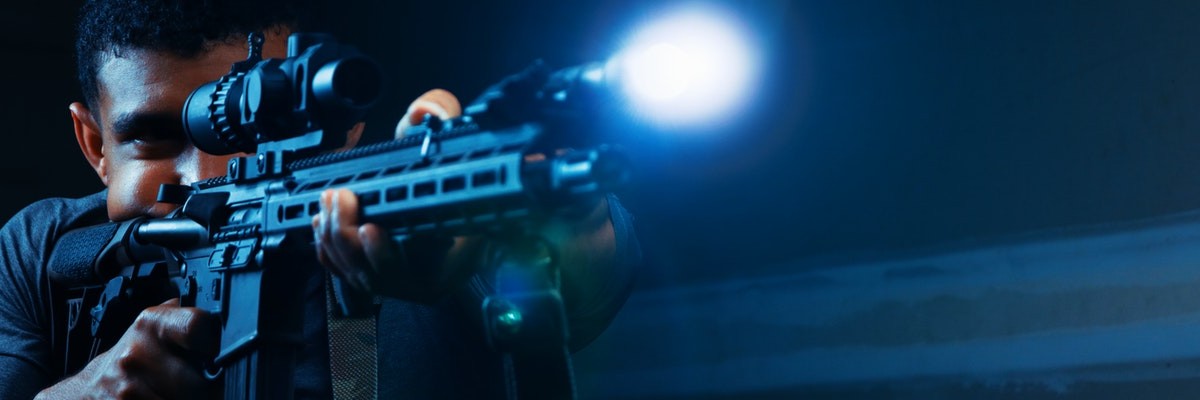 If you read much about post-TEOTWAWKI survival scenarios, the value and benefit of night vision devices quickly becomes apparent; nothing like seeing in the dark. I’m not an expert on night vision, but have been researching it for several months to select the most appropriate device for my bug out plans and after.
If you read much about post-TEOTWAWKI survival scenarios, the value and benefit of night vision devices quickly becomes apparent; nothing like seeing in the dark. I’m not an expert on night vision, but have been researching it for several months to select the most appropriate device for my bug out plans and after.
There are two basic categories of night vision devices; image intensification and thermal imaging. While thermal imaging devices are probably superior, they’re also several hundred or thousand dollars more expensive than their image intensifying counterparts, so I’m not considering them.
There are five broad “generations” of image intensification night vision;
- Generation 0 – The original night-vision system created by the United States Army and used in World War II and the Korean War…
- Generation 1 – … Once dubbed Starlight by the U.S. Army, these NVDs use ambient light provided by the moon and stars to augment the normal amounts of reflected infrared in the environment…
- Generation 2 – … They offer improved resolution and performance over Generation-1 devices, and are considerably more reliable. The biggest gain in Generation 2 is the ability to see in extremely low light conditions, such as a moonless night…
- Generation 3 – Generation 3 is currently used by the U.S. military. While there are no substantial changes in the underlying technology from Generation 2, these NVDs have even better resolution and sensitivity…
- Generation 4 – What is generally known as Generation 4 or “filmless and gated” technology shows significant overall improvement in both low- and high-level light environments…
I haven’t seen any generation 0 equipment for sale. There are also a few sub-generations or types, for example generation 1+ that falls in-between gen 1 and gen 2. Usually gen 1 and gen 1+ are the most affordable under $500, while gen 2 will deliver a much better image for $500-1,000 over gen 1 devices. Gen 3 gets into the multi-thousand dollar range and breaks my budget.
Finally there are three general applications; monocular, binocular, and scope (for mounting to firearms). Monoculars and binoculars can be mounted in headgear for hands free operation.
Many units come with an IR illuminator, that puts out a beam invisible to human eyes but that will work like a flashlight for the night vision device. From what I’ve read this works well but there are two major downsides. First, it uses batteries much faster. Second, and perhaps more important in a SHTF situation, the IR illuminator will be a beacon to anyone else using a night vision device, so can give away the fact you’re even there as well as your exact position.
I haven’t decided on which type I’ll purchase, but have narrowed it down to monocular (could be used driving) or scope (no need to elaborate). Probably a gen 1+ but maybe a low-end gen 2. In a bug out scenario, having night vision could make the difference between success and failure. However, it’s also a fairly large investment that won’t get much use unless TSHTF, so I’m not in a rush to spend perhaps $500 that could go to food storage, medical supplies, savings or other necessary preparations.
As always, you need to evaluate your specific circumstances and how you might use such equipment post-TEOTWAWKI. My primary application would be for bugging out, but night vision would also be very useful for keeping watch at a retreat.
Night Vision Roundtable Discussion
Do a Google search for “DIY Night Vision”, works at a gen 1+ level, cost me 30 bucks for an illuminated monocle
I know you said that going over $1k is outside of your budget, but have you considered something like the FLIR Scout?
It is coming out in October I believe, and it looks awesome.
Handheld monocular Thermal Vision. I haven’t used anything like this, but it looks to me like it would be much better than low-light NVG’s.
http://www.flir.com/cvs/americas/en/personalvision/products/scout/
What I’ve read says price is going to be around $3k for the top model, $2k for the lower end.
Very interesting, might tinker with that.
That’s the coolest things I’ve seen this year! It does *exactly* what survivalists want; perfect for bugging out, hunting, retreat security, etc. Looks like it totally beats even Gen 2 NVDs.
But $2k is pretty steep, and I’d want the optional 2x adapter. I’ll track that device and see what prices do. Until then, time to fortify the survival slush fund, just in case…
Are you kidding me???!!
FLIR beats any kind of passive NV, including GEN III!
No wonder the price on AN/PVS-14′s is beginning to drop…
The FLIR is nice! But I agree it’s pricey now. Maybe in a few years get a reconditioned unit.
Keep in mind that FLIR is thermal imaging and not nightvision which is usually IR.
FLIR does make a binocular thermal unit for marine use but it too is very pricy.
I have been contemplating a night vision device at the advice of a friend’s father who is of the same mind as many on your blog… I just do not know enough about them to make an informed decision… That said, thanks for the info. This helps, and it has sparked my interest once again.
Just a thought from a guy who has had to use NVGs, driving in anything monocular is a hell of a challenge until you get used to it, imagine looking through a toiletpaper tube with one eye (restricting your vision, and eliminating depth perception) I’d recommend trying it out before hand, there is a reason our pilots use binocular NVGs, as for gen 2 vs. gn 3 or better, spend the money. The difference between being able to tell if that’s a guy over there, or if that’s a BAD guy over there is well worth the price.
FLIR kicks ass, but has it’s limitations too, namely vegetation plays all sorts of havoc with it. Also, price, temperature limits, and complexity/reliability.
If you have nothing else….when I did survelance I used a Sony with Night Shot without running the camera. I could zoom in and could make things clearer at 50 yards with a fully charged battery. I bet it would mess up/show up on the NVD starlites. I used the first gen. in the Army, things sure have changed!
google “diy P8079hp tube”…people make nv’s with british surplus mil spec cascade gen 1 intensifiers – the resolution and gain beats early gen 2. but they are clunky. the construction is pretty plug and play, and most of all cost is $100/tube shipped from uk+ cheap optics for ccv cameras (c mount)


